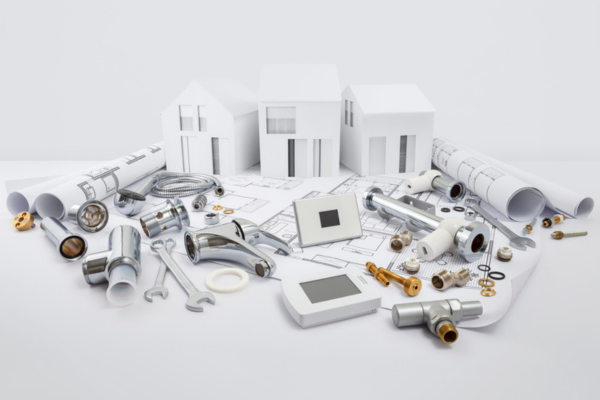Why plumbers can’t ignore smart home technology any longer
Smart homes will be a lot more intelligent about water, heating and cooling too, and that means plumbers have to get up to speed. John Fennell writes.
Every January, the world’s biggest tech fest, CES, takes place in Las Vegas in vast exhibitions halls filled with the latest smart home gadgets. While a lot of the new ideas are about convenience or automation, they’re increasingly also about how to run homes far more efficiently, including how we use water.
Smart homes have also rapidly evolved from a big focus on living room entertainment systems or home cinemas to looking at the whole house, including the long neglected, but practical rooms like kitchens, bathrooms, toilets and laundries.
If you’re sceptical about the smart home – or the plumber’s role in it – you shouldn’t be. Home technology is expected to be worth nearly $450 million in Australia alone this year and the average Aussie home will have an average 30 internet connected devices by 2021, many of them products that plumbers deal with every day like washing machines, dishwashers, water heaters, toilets, showers and air conditioners.
But smart technology is also being added to the nuts and bolts of homes in the form of sensors on pipes, taps, switches, windows or whole rooms so that monitoring what’s happening even behind walls or under floors becomes a whole new digital process. In fact, the market is being flooded with new products, but some are going that bit further to blend technology with plumbing to make homes even greener.
GAINING YOUR SENSORS
Wasted water is a big problem, but also a potentially big resource to tap at home and technology wants to help. One company, BrainPipes, is taking a smart home approach by placing sensors throughout a home or office’s plumbing to monitor what’s going on 24/7 even when you’re not there.
With the mains supply in default off mode, water flows only when the system receives a ‘legitimate’ request, but can pinpoint over-usage and leaks anywhere throughout the building and send alerts to tell you exactly where they’re happening. The company provides a monthly usage report that monitors consumption on all water-using devices comparing it to industry standards and past trends to help residents understand their water use and change habits if necessary.
Lots of other plumbing firms are getting in on the act too with all sorts of variations. US-based Delta Faucet Company, for example, has created a new type of leak detection based on a system of connected sensors and software to create a monitoring network. The sophisticated network can detect a range of water levels from pooling water to a few drips with the unit monitor triggering an automatic alert to smartphones or an audible alert and flashing LED light for any one at home.
OTHER ROOMS, OTHER CHOICES
Technology is also rushing into rooms like kitchens, bathrooms, toilets and laundries that traditionally haven’t had much digital attention. It’s often coming for convenience, but it’s also bringing a greener, less wasteful approach to the way these rooms and the appliances in them handle water and energy.
One of the biggest trends that is still in its infancy in Australia is smarter toilets. Pretty basic products for decades, they’re now coming wired and with high tech add-ons and sensors that automatically detect users, lift seats and calculate just how much water is needed to flush – smaller flushes can use as little as 2.3L per flush while a basic toilet that doesn’t have smart flush technology uses around 6 litres per flush.
That’s just the start. A toilet like the Numi features a night light, a heated seat, an integrated bidet with temperaturecontrolled water, an air dryer, a deodoriser, music and even washes itself and all controlled from a touchpad screen. Even adding electricity to the toilet adds a complication for plumbers, but all that technology could start to be a major challenge for plumbers when things go wrong.
Showers, taps and faucets are adding lots of new features that help to save water too. Apart from the trend to embed LED lighting and screens to help you select the right temperatures automatically, showers like Moen’s U connected shower is controlled from a smart phone to allow you to program settings, select preheat and pause features to avoid long waits while the water runs and with more accurate control of temperatures and duration. All features that have a big impact on water use in one of the most wasteful functions in the house.
The same innovation is coming to dishwashers which also haven’t changed that dramatically for decades. The big focus now is saving water and energy, with some of the latest models like the AquaSense from KitchenAid using leftover water from prior rinse cycles to pre-rinse the next one and using a third less water in the process.
DIGITAL PLUMBING
It should come as no surprise that smart home technology – chock full of copper of course – will disrupt home plumbing just as much as its disrupted every other profession. It may still be early days, but the embedding of smarts into some of our home’s most practical features is here to stay and is a challenge for plumbers going forward.
It no longer means business as usual when a plumber’s called to service a high tech toilet or shower, or pipes now networked or packed with sensors. Perhaps we’re entering a future when plumbers will need a home cabler as a partner.

